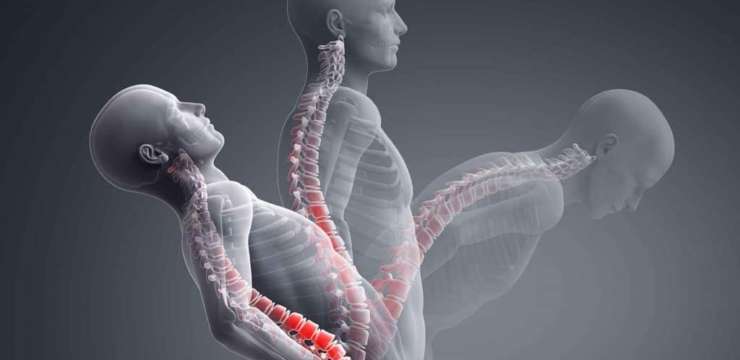
Gain knowledge on somatovisceral disorders from head injuries. Uncover symptoms, causes, and effective management strategies.
Table of Contents
Understanding Head Injuries and Their Impact on the Brain-Body Connection Through Somatovisceral Disorders
Beyond simple bumps or bruises, head traumas may alter how your body functions and feels. Imagine a head injury causing persistent fatigue, gastrointestinal issues, or even difficulty concentrating on daily tasks. The brain-body link is the reason behind this, since messages from your brain influence your muscles and organs and vice versa. A brain injury that disrupts this connection may lead to somatovisceral diseases, illnesses in which pain in the body or problems with the muscles and skin affect your internal organs. This article covers what these conditions are, how they relate to head trauma, and how external variables such as stress or pollution might exacerbate them. Drawing on actual clinical insights from specialists like Dr. Alexander Jimenez, we’ll also examine straightforward, non-surgical approaches to help address these issues.
Anyone coping with the aftereffects of a head injury—whether from a fall, a vehicle accident, or a sports hit—should read this advice. You may take action to feel better without depending on medications or surgeries by becoming aware of these relationships. To help you locate additional assistance online, keywords such as “somatovisceral disorders,” “head injury symptoms,” and “brain-body connection” highlight key concepts.
What Are Somatovisceral Disorders?
In somatovisceral illnesses, the inner organs—such as your heart, intestines, or lungs—do not communicate with the exterior portions of your body, including your muscles, skin, and bones. The terms “visceral” and “somato” describe the soft organs inside of you and body or muscle-related, respectively. These systems often function in unison via nerves that transmit and receive signals. But if anything goes wrong, such as your back muscles being irritated and sending the wrong signals to your stomach, it might cause discomfort, swelling, or other problems far from the initial concern.
A short in one room might cause lights in another to flicker, much like bad wiring in a home. Unidentified pain or functions inconsistent with the damage’s location are common symptoms of these illnesses. For instance, because nerves in the spine link the neck muscles, tense neck muscles from poor posture may cause stomach distress. Somatovisceral reflexes, which cause organ changes in response to stress, are the mechanism by which this happens, according to research (Jänig, 2016). When these problems include persistent concern about bodily sensations, doctors refer to them as somatic symptom disorder (SSD), which combines mood and body cues (American Psychiatric Association, 2013).
Somatovisceral problems might manifest in daily life as stomach cramping after a stressful day or chest tightness during worry. Millions are impacted by them, and they often coexist with illnesses like chronic tiredness or irritable bowel syndrome (IBS). Knowing this makes it easier to understand why addressing surface pain alone isn’t always sufficient—the whole circuitry has to be fixed.
Dr. Alexander Jimenez, a chiropractor who has been providing non-surgical therapy for more than 30 years, often observes this in his clinic. He points out that general pain might result from spinal abnormalities that transmit conflicting signals to organs. According to his wellness podcasts and clinic materials, he takes a functional medicine approach that emphasizes structural changes and other underlying factors to restore equilibrium (Jimenez, 2024a).
The Link Between Head Injuries and Somatovisceral Disorders
The brain-body link may be significantly disrupted by head traumas, even minor ones like concussions. When your head is shaken, the brain bounces within your skull, resulting in a mild traumatic brain injury (mTBI). This causes somatovisceral problems by interfering with neural connections between your brain and your body. According to research, individuals with mTBI are more likely to have somatic symptoms and related disorders (SSRD), which are characterized by severe, ongoing bodily aches that have no apparent explanation (Jobin et al., 2025).
What causes this to occur? The autonomic nervous system (ANS), which is controlled by the brain, regulates bodily processes such as digestion and heart rate without conscious thought. This system may become irritated by a brain injury, leading to reflexes that magnify signals. For example, inflammation after an injury may cause gut nerves to overreact, resulting in the typical somatovisceral symptoms of bloating or nausea. A study revealed connections between mTBI and inexplicable symptoms or functional seizures, indicating that the wiring in the brain is disrupted (Jobin et al., 2025).
Six months after mTBI, another study that looked at 476 people discovered that 15–27% of them had acquired SSD. Early perceptions of the severity of the injury predicted poorer outcomes, and these people experienced greater pain, exhaustion, and mental distress (Silverberg et al., 2025). The brain seems to relive the incident, delivering lingering stress signals to the body.
Dr. Jimenez sees this in patients after an injury in clinical settings. He talks about how whiplash-like head injuries may cause miscommunication between the spine and the brain, which might result in stomach problems or irregular heartbeats. His team helps patients recover control by calming these responses with moderate modifications (Jimenez, 2024b). This connection demonstrates that head trauma affects the whole body, not just the head.
How Head Injuries Disrupt the Brain-Body Connection
Blood flow, hormones, and a network of nerves are all necessary for the brain-body link. Your brain and spinal cord make up your central nervous system (CNS), while your somatic and autonomic systems manage voluntary and involuntary movements, respectively, such as walking and breathing. Clear signals might be blocked by swelling or nerve damage caused by head trauma.
A little enlargement of the brain after a concussion may put pressure on the vagus nerve, which is essential for soothing the body. Faster heartbeats or poor digestion may result from this weakening of vagal tone, the nerve’s stress-reduction mechanism. According to Burns (1907, as referenced in StatPearls, 2023), somatovisceral illnesses arise when somatic (body) difficulties feed into visceral (organ) problems. For example, neck tension may cause stomach cramping via spinal reflexes.
An injury leads to pain, which in turn strains the brain, which in turn deteriorates organ function. This cycle is perpetuated over time. In his work at the neuropathy center, Dr. Jimenez notes that head trauma often results in autonomic abnormalities, such as lightheadedness or perspiration, due to disturbed somatovisceral pathways (Jimenez, 2024). Resolving the relationship entails treating both bodily reactions and mental messages.
Symptoms of Somatovisceral Disorders Linked to Head Injuries
Many individuals anticipate headaches, lightheadedness, or even some memory loss after a head injury. The most unexpected thing is that the same damage might cause the rest of the body to feel “off” in ways that have nothing to do with the brain. These are somatovisceral symptoms, which occur when the body’s external structures—muscles, joints, and skin—send unclear signals that interfere with organ function.
Following concussions or whiplash-like injuries, clinicians often see the following overlapping symptoms months or even years later:
- Issues with digestion that suddenly arise
Following a vehicle accident or sports collision, symptoms such as bloating, acid reflux, alternating constipation and diarrhea, or nausea may begin. Swelling or neck misalignment often aggravates the vagus nerve, which travels from the brainstem to the stomach and intestines via the neck. According to a major research, 40–60% of individuals with persistent post-concussion symptoms also reported complaints similar to irritable bowel syndrome (IBS) that did not exist prior to the injury (Stubbs et al., 2020). - Changes in the heart and breathing
Many patients have uncontrollably fast or irregular heartbeats. Just crossing a room might cause dyspnea for some people. This occurs because head trauma may reduce vagal tone, the neurological system’s “brake pedal,” trapping the fight-or-flight response in the “on” position (Silverberg et al., 2025). - Pervasive ache and odd feelings
Common symptoms include burning, tingling, or electric shock sensations in the arms, legs, or chest. “It feels like my whole body is inflamed even though the doctors can’t find anything on regular tests,” patients report. According to Jobin et al. (2025), these are typical indicators of central sensitization, a condition in which the brain intensifies pain sensations after an injury. - Issues with perspiration and temperature
Some individuals don’t sweat at all or sweat excessively on one side of their body. Others constantly have freezing hands and feet. Disrupted brain-stem regulation of sweat glands and blood vessels is the cause of these autonomic alterations. - Fatigue that cannot be resolved by sleep
The brain uses additional energy to quiet the confused signals from the body, leaving little for everyday tasks, which is why individuals wake up fatigued even after 10 to 12 hours of sleep. - Mental and emotional problems that have a physical component
Panic episodes, anxiety, difficulty finding words, and brain fog are not “just in your head.” They occur because the functions of the stomach and heart are regulated by the same neural pathways that govern mood. Everything feels worse at once when a brain injury causes inflammation in those pathways (Jobin et al., 2025).
Patients who were told “it’s all anxiety” but really have palpable nerve irritation from previous head or neck injuries are often seen by Dr. Alexander Jimenez. Heart-rate variability testing in his clinic often reveals very low vagal tone in these patients, demonstrating that the issue is real and physical (Jimenez, 2024b).
| Common Symptom | How It Feels Day-to-Day | Why It Happens After a Head Injury |
|---|---|---|
| Stomach pain / IBS | Constant bloating, cramps after eating | Vagus nerve irritation + inflammation |
| Racing heart | Heart pounds when standing or resting | Lost vagal brake on the heart |
| Burning skin/tingling | Feels like sunburn or pins-and-needles | Central sensitization in the brain |
| Extreme fatigue | “Dead battery” feeling all day | The brain is working overtime to fix signals |
| Temperature issues | Ice-cold hands or hot flashes | Autonomic centers in the brainstem are damaged |
Environmental Factors Influencing Brain Activity and the Body
Your environment greatly affects how brain injuries recover or exacerbate somatovisceral problems. Noise, air pollution, and even social stress may alter bodily reactions and brain waves. Inflammation caused by heavy metals from contaminated water, for example, may penetrate the blood-brain barrier and heighten neuronal sensitivity (Xu et al., 2020).
The straight path between your stomach and brain is disrupted by the hormone cortisol, which is elevated by stress from work or traffic. If reflexes are already impaired, this may result in severe IBS from modest post-injury stomach symptoms (Jimenez, 2022a). Serotonin, which is mostly produced in the stomach, is altered by a poor diet or a lack of sunlight, affecting mood and pain thresholds.
They have a significant impact on everyday activities. Simple actions may become taxing, like preparing supper while experiencing anxiety from loudness or driving while distracted by pollution. This raises the risk of emotional development problems or accelerated aging of brain cells in children and the elderly (Faig et al., 2023).
Dr. Jimenez’s functional medicine seminars focus on environmental changes, such as lowering exposure to toxins, to alleviate neuropathy symptoms after an accident. He observes that balanced meals and cleaner air reduce inflammation and enhance brain-body communication (Jimenez, 2024b).
Overlapping Risk Profiles and Body-Wide Effects
Similar to a cascade, somatovisceral diseases resulting from brain traumas establish shared dangers across systems. One feature might be inflammation, as brain swelling can trigger the release of cytokines throughout the body, affecting the stomach and joints. Another is ANS dysregulation, in which poor sleep is linked to cardiac problems via low vagal tone (Silverberg et al., 2025).
The likelihood of depression or chronic tiredness is increased when symptoms such as mood swings or widespread discomfort are shared by these profiles. Hormonal ties often result in increased rates for women after mTBI (Jobin et al., 2025). Routines like working out or interacting with others are painful, and the body feels assaulted from the inside.
According to Dr. Jimenez’s case study, veterans who have suffered brain trauma often have nerve and gastrointestinal discomfort. To avoid escalation, his integrated care maps these characteristics (Jimenez, 2024b).
Non-Surgical Treatments to Boost Somatovisceral Function
The good news is that, with the right support, the body and brain can heal quite well. The following therapies may significantly enhance the brain-body connection without the need for surgery or potent drugs, according to research and clinical experience.
- Chiropractic adjustments of the spine, particularly in the upper neck
Within minutes of making minor changes to the C1 and C2 bones in the neck, vagus nerve activity has been shown to increase. The precise opposite of fight-or-flight, parasympathetic (rest-and-digest) tone, was clearly elevated after an upper-cervical adjustment, according to a 2021 pilot study that assessed heart-rate variability before and after the procedure (Goetz et al., 2021, as reported in Momentum Chiropractic, 2025). Even patients with recent concussions may get therapy safely because of Dr. Jimenez’s utilization of low-force procedures and precise tools (Jimenez, 2024a). Surgery is not necessary to treat these problems; moderate, manual techniques are effective. The best treatment is chiropractic adjustments, which relieve nerve pressure and reset reflexes. Post-mTBI symptom improvement is supported by studies (Hawk, 2016). - Therapeutic Cranial-Sacral and Myofascial Release
Brain and spinal cord swelling may be reduced by lightly touching the skull and spine. At the table, patients often experience improved breathing and a wave of calm. - Exercises to stimulate the vagus nerve (no gadgets required): By following these easy daily routines, the vagus nerve is once again “on” and inflammation within the body is reduced.
- Breathe deeply and slowly from the abdomen (4 seconds in, 6–8 seconds out).
- Gargling vigorously till the eyes moisten
- Humming or loudly singing
- Taking a cold shower or dousing one’s face with cold water
- Acupuncture.
Needles inserted along the neck’s vagus route or along the ear (auricular acupuncture) rapidly alleviate post-concussion pain and nausea. After receiving acupuncture for 6–8 weeks, veterans with brain injuries from blasts saw significant reductions in headache and gastrointestinal issues (Jimenez, 2024b). - Anti-Inflammatory Diet & Digestive Recovery
The gut-brain axis is calmed by adding omega-3 fish oil, turmeric, ginger, and bone broth while eliminating gluten, dairy, and processed sugar. Many of Dr. Jimenez’s patients report that only dietary modifications can alleviate their stomach discomfort and cognitive fog within 2 to 4 weeks. - Training the Brain with Neurofeedback
Certain computer applications train the brain to produce healthier wave patterns. Many patients report much reduced physical discomfort, improved sleep, and sharper thinking after 20–40 sessions. - Graded Movement Therapy & Exercise
By gradually increasing the amount of walking or pool treatment, the nervous system is kept from being locked in defensive mode. Once the neck is stabilized, Dr. Jimenez’s rehabilitation team employs CrossFit-style functional exercises; patients report feeling “normal” once again. - Treatment with Red Light/Low-Level Laser
Applying specific red and near-infrared wavelengths to the head and neck speeds up nerve tissue recovery and reduces inflammation in the brain. Using this report helps clinics recover from post-concussion syndrome more quickly. - Heart-Rate Variability (HRV) and mental awareness: Biological feedback
Within minutes of using apps and tiny chest sensors, individuals may learn how to increase their own vagal tone. According to Silverberg et al. (2025), reduced levels of anxiety and discomfort are directly correlated with higher HRV scores.
The combined effects of these therapies, which are precisely what chiropractic neurology and functional-medicine clinics perform, are quickly noticeable. Dr. Jimenez has observed that most patients who follow a complete brain-body program enjoy a 50–80% improvement in somatovisceral symptoms within 8–12 weeks (Jimenez, 2024b).
A Questionnaire Example of TBI Symptoms
How Treatments Improve the Central Nervous System and Vagal Tone
By lowering nerve line noise, these treatments help to repair the central nervous system. Repair is aided by adjustments that increase blood flow to the brain (Masarsky & Todres-Masarsky, 2001). By decreasing heart rate, improving digestion, and activating the nerve via neck exercises, they increase vagal tone.
Better brain-body communication ensues: autonomic systems balance, somatic muscles relax. This reduces anxiety and nausea sensations. Early studies indicate that chiropractic care reduces inflammation by increasing vagal activity (Goetz et al., 2021, as referenced in Momentum Chiropractic, 2025).
According to Dr. Jimenez’s findings, patients with low vagal tone after an injury show changes in heart rate variability following modifications, which improve their overall state of calm (Jimenez, 2024a).
Enhancing Somatic and Autonomic Systems Through Better Communication
When communication is restored, autonomic (organ) harmony and somatic (muscle) control couple. By coordinating breath with movements, yoga and other treatments increase vagus signals. You become better at managing stress over time, experiencing fewer outbursts.
To help patients regain their habits, Dr. Jimenez’s CrossFit rehab combines movement with modifications (Jimenez, 2024b). This comprehensive change transforms survival mode into flourishing mode.
Conclusion: Reclaiming Your Brain-Body Balance
The unseen connections that allow your brain and body to communicate might seem broken after a head injury. Simple everyday actions might turn into grueling fights due to the resulting somatovisceral problems. However, the damaged nervous system can also heal itself.
Chiropractic treatment, vagus-nerve exercises, clean diet, acupuncture, and focused movement are mild, drug-free methods that have been shown by science and actual clinics to reduce pain, quiet the stomach, stabilize the heart, and clear the mind. When the brain-body link was treated rather than symptoms were covered up, thousands of individuals who were told they would just have to live with it are now leading active, comfortable lives once again.
After a brain injury, recovery is possible if you or someone you care about is still having problems weeks, months, or years later. Work with a healthcare professional knowledgeable in somatovisceral reflexes and the vagus nerve, beginning with the fundamentals: deep breathing, gentle neck care, and reducing inflammatory foods. The body merely needs the correct path to healing.
You are not required to remain immobile. It is possible for the damaged brain-body link to regain its strength.
References
- American Psychiatric Association. (2013). Diagnostic and statistical manual of mental disorders (5th ed.). doi.org/10.1176/appi.books.9780890425596
- Faig, K. E., Smith, K. E., & Dimitroff, S. J. (2023). Somatovisceral influences on emotional development. Emotion Review. doi.org/10.1177/17540739231163180
- Hawk, C. (2016). Chiropractic practice, experience, and research related to somatovisceral interactions. In Musculoskeletal Key. musculoskeletalkey.com/chiropractic-practice-experience-and-research-related-to-somatovisceral-interactions/
- Jänig, W. (2016). Basic science on somatovisceral interactions: Peripheral and central evidence-based implications for research. In Musculoskeletal Key. musculoskeletalkey.com/basic-science-on-somatovisceral-interactions-peripheral-and-central-evidence-base-and-implications-for-research/
- Jimenez, A. (2022a). The gut-brain axis is affected by somatovisceral pain. Dr. Alex Jimenez.com. dralexjimenez.com/gut-brain-axis-affected-somatovisceral-pain/
- Jimenez, A. (2022b). Weakness, pain, numbness, radiculopathy, and chiropractic. Chiropractic Scientist. chiropracticscientist.com/weakness-radiculopathy-chiro/
- Jimenez, A. (2024a). Injury specialists. Dr. Alex Jimenez.com. dralexjimenez.com/
- Jimenez, A. (2024b). Dr. Alexander Jimenez, DC, APRN, FNP-BC, IFMCP, CFMP, ATN ? – Injury Medical Clinic PA. LinkedIn. www.linkedin.com/in/dralexjimenez/
- Jobin, K., et al. (2025). Somatic symptom and related disorders and mild traumatic brain injury: A systematic review. Biopsychosoc Sci Med, 87(8), 548-564. doi.org/10.1097/PSY.0000000000001427
- Masarsky, C. S., & Todres-Masarsky, M. (2001). Somatovisceral aspects of chiropractic: An evidence-based approach. Churchill Livingstone. pmc.ncbi.nlm.nih.gov/articles/PMC2051312/
- Momentum Chiropractic. (2025). Chiropractor vagus nerve. Momentum Chiropractic Care. www.momentumchiropracticcare.com/blogs/news/chiropractor-vagus-nerve
- Silverberg, N. D., et al. (2025). Somatic symptom disorder after mild traumatic brain injury. Journal of Head Trauma Rehabilitation. doi.org/10.1097/HTR.0000000000001068
- StatPearls. (2023). Physiology, viscerosomatic reflexes. NCBI Bookshelf. www.ncbi.nlm.nih.gov/books/NBK559218/
- Stubbs, J. L., Green, K. E., Silverberg, N. D., Howard, A., Dhariwal, A. K., Brubacher, J. R., Garraway, N., Heran, M. K. S., Sekhon, M. S., Aquino, A., Purcell, V., Hutchison, J. S., Torres, I. J., & Panenka, W. J. (2020). Atypical Somatic Symptoms in Adults With Prolonged Recovery From Mild Traumatic Brain Injury. Frontiers in Neurology, 11, 43. pmc.ncbi.nlm.nih.gov/articles/PMC7010927/
- Xu, F., et al. (2020). Environmental pollutants and the risk of neurological disorders. Environmental Science and Pollution Research. doi.org/10.1007/s11356-020-11272-3
Disclaimers
Professional Scope of Practice *
The information herein on "Recovery Tips for Head Injuries and Somatovisceral Disorders" is not intended to replace a one-on-one relationship with a qualified health care professional or licensed physician and is not medical advice. We encourage you to make healthcare decisions based on your research and partnership with a qualified healthcare professional.
Blog Information & Scope Discussions
Welcome to El Paso's wellness blog, where Dr. Alex Jimenez, DC, FNP-C, a board-certified Family Practice Nurse Practitioner (FNP-C) and Chiropractor (DC), presents insights on how our team is dedicated to holistic healing and personalized care. Our practice aligns with evidence-based treatment protocols inspired by integrative medicine principles, similar to those found on dralexjimenez.com, focusing on restoring health naturally for patients of all ages.
Our areas of chiropractic practice include Wellness & Nutrition, Chronic Pain, Personal Injury, Auto Accident Care, Work Injuries, Back Injury, Low Back Pain, Neck Pain, Migraine Headaches, Sports Injuries, Severe Sciatica, Scoliosis, Complex Herniated Discs, Fibromyalgia, Chronic Pain, Complex Injuries, Stress Management, Functional Medicine Treatments, and in-scope care protocols.
Our information scope is limited to chiropractic, musculoskeletal, physical medicine, wellness, contributing etiological viscerosomatic disturbances within clinical presentations, associated somato-visceral reflex clinical dynamics, subluxation complexes, sensitive health issues, and functional medicine articles, topics, and discussions.
We provide and present clinical collaboration with specialists from various disciplines. Each specialist is governed by their professional scope of practice and their jurisdiction of licensure. We use functional health & wellness protocols to treat and support care for the injuries or disorders of the musculoskeletal system.
Our videos, posts, topics, subjects, and insights cover clinical matters, issues, and topics that relate to and directly or indirectly support our clinical scope of practice.*
Our office has reasonably attempted to provide supportive citations and has identified the relevant research studies or studies supporting our posts. We provide copies of supporting research studies available to regulatory boards and the public upon request.
We understand that we cover matters that require an additional explanation of how they may assist in a particular care plan or treatment protocol; therefore, to discuss the subject matter above further, please feel free to ask Dr. Alex Jimenez, DC, APRN, FNP-BC, or contact us at 915-850-0900.
We are here to help you and your family.
Blessings
Dr. Alex Jimenez DC, MSACP, APRN, FNP-BC*, CCST, IFMCP, CFMP, ATN
email: coach@elpasofunctionalmedicine.com
Licensed as a Doctor of Chiropractic (DC) in Texas & New Mexico*
Texas DC License # TX5807
New Mexico DC License # NM-DC2182
Licensed as a Registered Nurse (RN*) in Texas & Multistate
Texas RN License # 1191402
ANCC FNP-BC: Board Certified Nurse Practitioner*
Compact Status: Multi-State License: Authorized to Practice in 40 States*
Graduate with Honors: ICHS: MSN-FNP (Family Nurse Practitioner Program)
Degree Granted. Master's in Family Practice MSN Diploma (Cum Laude)
Dr. Alex Jimenez, DC, APRN, FNP-BC*, CFMP, IFMCP, ATN, CCST
My Digital Business Card







